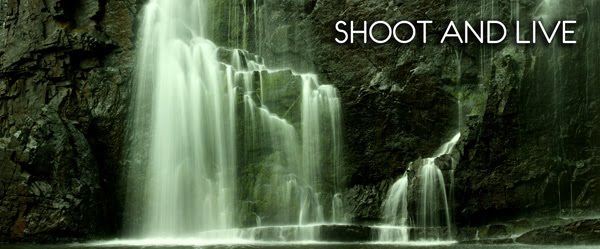This is my first one - my favourite shot from a trip to Canberra I had recently. I'm not normally prone to editing so much, and this one could nearly even be called more art than photography, but it's a great example of the use of the 'gradient map' tool:

It is a photo of the US Monument to Australia for WW1 (I think..), edited to represent the colours of the US: red, white and blue.
Here is the original shot:

We were cruising around canberra in a car towards sunset. In a car, I like to have a telephoto lens to capture things in the distance (anything close just ends up as a photo of a road or other cars) - so I had my 70-300. The 70-300 is a bit dodgy at apertures wider than about f/8, so I had it on Av mode at f/10 and ISO400 to ensure a fast shutter speed for the moving car. I also had the white balance set to 6000K (cloudy) to really boost the nice sunset colours. The camera here chose 1/1600 as the shutter speed.
I like the photo, but it's a bit too simple for me. I decided that either something cool should be done to it or to get rid of it. It's always worth a try!
Firstly I made it exactly straight and centred using a crop.
Then I decided on using a gradient map. A gradient map is a function which will convert certain parts of your photo to certain colours based on their brightness - whether they're a highlight, shadow, midtone or something in between (see levels for an explanation of these).
I opened gradient map tool (image -> adjustments -> gradient map) and clicked the colour gradient there to open up further options. Out of the 'presets' there, I chose one which featured three colours. I changed these to blue, red and white, meaning that the shadows in the photo (the right half of the statue) would be blue, the midtones (the sky/backdrop) would be red and the highlights (left half of the statue) would be white:

I had a play around with the square colour icons you can see at the bottom of the gradient there to get the colours exactly where I wanted. I also dropped the smoothness somewhat to increase contrast between the colours.
I hit 'ok', and the photo was saved and completed.
Have a play with the gradient tool function! If you find you've got an arty and simple composition but the photo just doesn't pop with natural colours, you might be able to find something interesting.
Cheers
Tal

No comments:
Post a Comment